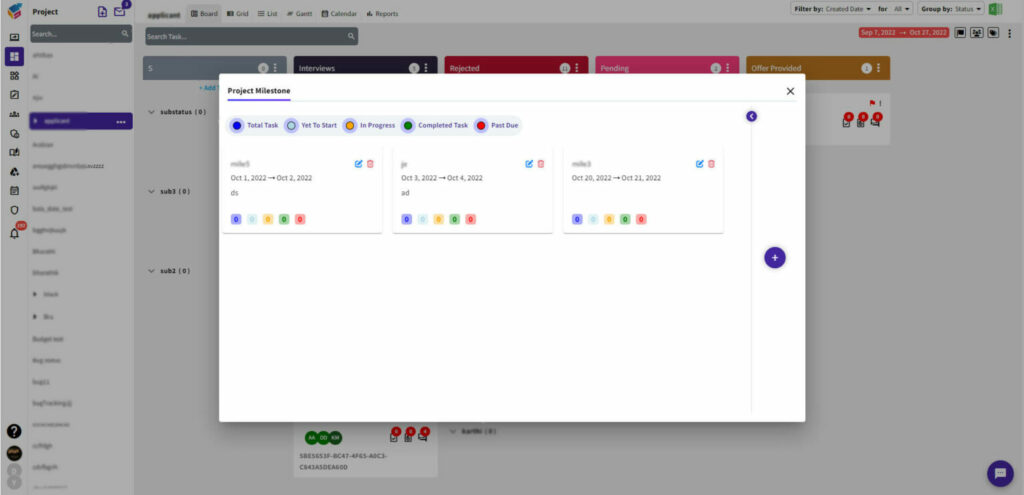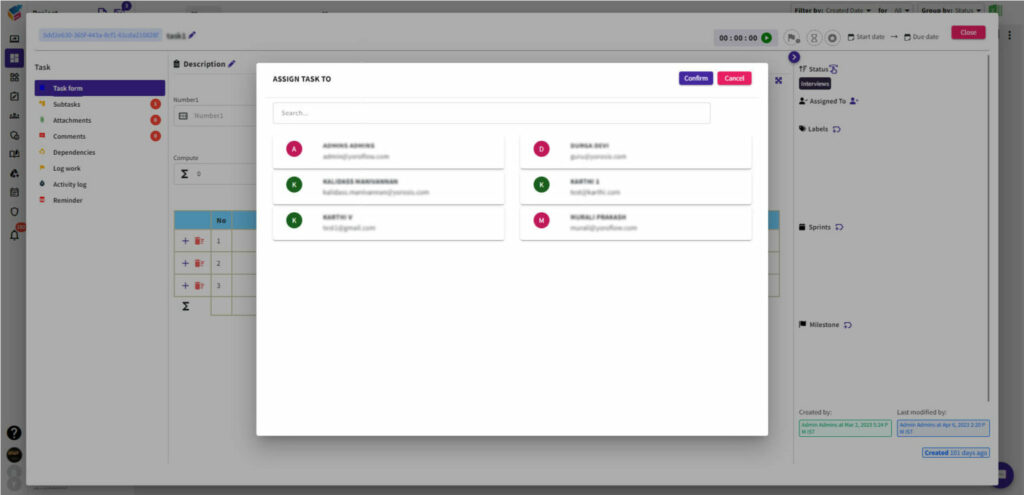Table of Contents
Embarking on a new project at work is akin to embarking on a thrilling adventure, filled with various stakeholders, strict deadlines, important deliverables, and essential tools. Whether you’re spearheading a new product launch, organizing a vendor event, mapping out the annual editorial calendar, or facilitating employee onboarding, having a well-structured project schedule is imperative.
Equipping yourself with the ability to craft a project schedule that encompasses clear plans, streamlined processes, and defined responsibilities is crucial for keeping your team on the right track. It allows you to identify who is responsible for each task and when it should be completed, while also enabling you to visualize how all the moving parts fit together.
Although creating a comprehensive project schedule may require an upfront time investment, it ultimately enhances efficiency, fosters accountability, and brings clarity to the project. These outcomes are undoubtedly music to everyone’s ears, particularly your boss, who entrusted this endeavor to your capable hands. Moreover, you’ll find that you can streamline your project management toolkit by eliminating unnecessary tools that may inadvertently complicate the process.
Even if your official job title doesn’t include “project manager,” for this project and the many more that lie ahead, you effectively assume that role. Embrace it wholeheartedly! By adopting a project manager’s mindset, you’ll be well on your way to revitalizing your work practices and ensuring successful outcomes.
What is project scheduling?
Project scheduling is the process of organizing and planning the tasks, activities, and resources needed to accomplish a project within a specific timeframe. It involves breaking down the project into smaller, manageable tasks, determining their dependencies and sequence, estimating their durations, and allocating resources effectively.
A project schedule serves as a roadmap that outlines when each task should start and finish, allowing project managers to coordinate and monitor progress, identify potential bottlenecks, and adjust as needed. It helps ensure that projects are completed on time, within budget, and with the optimal utilization of resources.
What are the steps of project scheduling?
The steps of project scheduling typically include:
- Define project scope: Clearly outline the objectives, deliverables, and boundaries of the project. This step ensures a clear understanding of what needs to be accomplished.
- Break down tasks: Divide the project into smaller, manageable tasks or work packages. Identify the sequence and dependencies between tasks to establish the order in which they need to be completed.
- Estimate task durations: Determine how long each task is expected to take. This can be done by consulting subject matter experts, historical data, or using estimation techniques such as analogous or parametric estimating.
- Allocate resources: Identify the resources required for each task, including personnel, equipment, and materials. Assign the necessary resources to each task, considering availability, skill sets, and dependencies.
- Create a project schedule: Using project management software or tools, develop a visual representation of the project schedule. This typically involves creating a Gantt chart or a timeline that shows the start and end dates of each task, along with their dependencies and critical path.
- Optimize the schedule: Analyze the schedule for potential conflicts, bottlenecks, or resource overloads. Adjust as necessary to balance workload, resolve conflicts, and ensure a realistic and achievable timeline.
- Set milestones: Identify key milestones or checkpoints throughout the project to track progress and measure success. These milestones can serve as indicators of major accomplishments and help keep the project on track.
- Communicate and update: Share the project schedule with stakeholders, team members, and any relevant parties. Regularly update the schedule to reflect actual progress, changes, or unforeseen events that may impact the project timeline.
- Monitor and control: Continuously monitor the project’s progress against the schedule. Track actual performance, compare it with the planned schedule, and take corrective actions if there are deviations or delays. This involves proactive risk management and timely decision-making to keep the project on schedule.
- Review and adjust: Periodically review and evaluate the project schedule to ensure its effectiveness. Adjustments may be necessary due to changing requirements, new risks, or unforeseen circumstances. Continuously improve the scheduling process based on lessons learned from previous projects.
It’s important to note that the specific steps and their order may vary depending on the project management methodology or approach used.
What are some project scheduling techniques?
There are several project scheduling techniques that can be utilized, depending on the nature of the project and the available resources. Some commonly used project scheduling techniques include:
- Gantt Charts: Gantt charts are visual representations of project schedules that display tasks as horizontal bars along a timeline. They illustrate task durations, dependencies, and milestones, allowing for easy understanding and tracking of the project’s progress.
- Critical Path Method (CPM): CPM is a technique used to determine the longest path of dependent tasks in a project schedule. By identifying the critical path, which represents the sequence of tasks with the least amount of float or slack, project managers can focus on managing and optimizing those tasks to ensure the project’s timely completion.
- Program Evaluation and Review Technique (PERT): PERT is a probabilistic scheduling technique that incorporates task durations, estimates, and uncertainties. It allows for the calculation of optimistic, pessimistic, and most likely durations for each task, enabling a more realistic and flexible project schedule.
- Precedence Diagramming Method (PDM): PDM is a scheduling technique that uses nodes to represent tasks and arrows to depict task dependencies. It provides a visual representation of the project’s logical relationships and helps identify the critical path.
- Resource Leveling: Resource leveling is a technique used to balance and optimize resource utilization in a project schedule. It aims to prevent resource overloads or conflicts by adjusting task start and end dates while considering resource availability and dependencies.
- Agile Scheduling: Agile project management methodologies, such as Scrum or Kanban, utilize iterative and incremental scheduling techniques. These approaches emphasize flexibility, adaptability, and continuous collaboration, allowing for frequent adjustments to the project schedule based on changing priorities and feedback.
- Monte Carlo Simulation: Monte Carlo simulation is a technique that uses probability distributions and random sampling to simulate potential project outcomes. It helps assess the overall project schedule’s reliability and provides insight into the likelihood of meeting specific milestones or deadlines.
These are just a few examples of project scheduling techniques. Project managers may also employ other tools and approaches based on the project’s unique requirements, team dynamics, and available resources.
Tackle project scheduling like a pro
When it comes to project scheduling, Yoroproject is a powerful project management tool that can help you tackle it like a pro. With its user-friendly interface and comprehensive features, Yoroproject allows you to efficiently plan, organize, and manage your project schedule.
Here’s how you can leverage Yoroproject to excel in project scheduling:
- Visualize your project: Yoroproject provides customizable, intuitive boards where you can create a visual representation of your project schedule. Use columns to define tasks, assignees, due dates, and dependencies. The board’s visual layout allows for a clear overview of your project and its timeline.

- Utilize timeline view: Take advantage of Yoroproject‘s timeline view, which allows you to see your project schedule in a Gantt chart-like format. You can easily adjust task durations, dependencies, and milestones directly on the timeline, gaining a deeper understanding of the project’s timeline and critical path.

- Automate workflows: Yoroproject offers automation features that can streamline your project scheduling process. You can set up automatic notifications for task deadlines, dependencies, or changes, ensuring everyone stays informed and on track. Automation saves time and reduces the risk of errors or oversights.

- Collaborate in real-time: With Yoroproject, you can collaborate with your team in real-time, enhancing communication and coordination. Team members can update task statuses, leave comments, and attach relevant files directly within the platform. This fosters transparency and ensures everyone is aligned with the project schedule.

- Track progress and milestones: Use Yoroproject‘s progress tracking features to monitor task completion and milestones. You can visually track progress through task progress bars or percentage completion indicators. This helps you stay on top of the project’s status and identify potential bottlenecks.

- Resource management: Yoroproject enables you to allocate and manage resources effectively. Assign team members to tasks, specify workload, and monitor resource availability. This feature helps prevent overloading resources and ensures a balanced distribution of tasks.

- Integration with other tools: Yoroproject integrates with various third-party apps and tools, such as calendar applications, communication platforms, and file storage services. This allows you to synchronize your project schedule with other tools you use, promoting seamless workflow management.

By leveraging the capabilities of Yoroproject, you can streamline your project scheduling process, enhance collaboration, and gain valuable insights into your project’s timeline. With a professional tool like Yoroproject at your disposal, you’ll be able to tackle project scheduling with confidence and efficiency.




